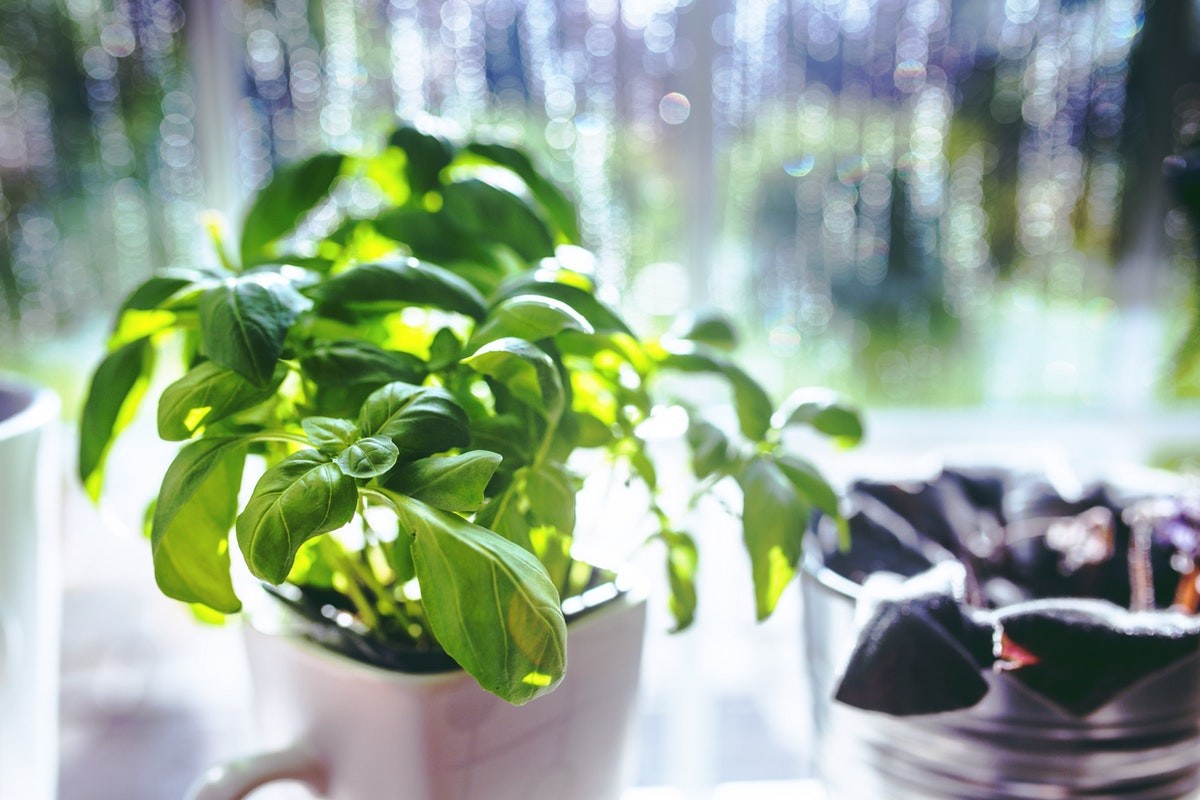So, you’ve decided that you’re ready to start your own garden, huh?
Sounds like it’s all immaculate hedgerows, luscious veg, and vibrant flowers for you!
Or…is it?
Gardening is hard. Especially if you weren’t blessed with a natural “green thumb.” But, there is good news: you can absolutely become a good gardener, green thumb or no. You just have to be willing to start small. And I mean pretty small.
We’re going ALL the way back to gardening 101 and we’re going to start with a few simple herbs anyone can master:
Basil
Everyone’s favorite herb. Certainly one of the most common. Even the grocery store carries basil plants.
Because that’s definitely the first place I go to look for plants. Yup. 100%.
Basil is one of the most versatile plants out there. Its crisp robust flavor goes well with everything from a vibrant summer gazpacho to your Thanksgiving turkey. It’s a garden stable that you, honestly, probably shouldn’t do without.
Did you know? Studies suggest that Basil may reduce inflammation.
Basil is a full-sun plant, so you’ll want to make sure to put it in a sunny spot where it can get at least 6 hours of direct sunlight every day.
Make a red sauce. You take about 5lbs of Roma tomatoes (it matters), a whole head of garlic ― peeled and crushed, and a handful of the biggest basil leaves you can find. Toss those all in about ¼ cup of olive oil, sprinkle with salt and pepper, and roast it at 250° F for four hours. Once it’s done, throw it in the blender and blend away until its as chunky or as smooth as you like. Add more salt and pepper to taste.
Tip: Basil does not like heat. Around the end of spring, it will start to “bolt” (which is what I want to do when it starts to get hot, too). Bolting is when a plant starts going to seed. You’ll notice the basil start to grow rapidly, putting out little bunches of white flowers.
Using basil leaves from an actively bolting plant can be a recipe for disaster. Basil that’s bolted is bitter. Just like your grandma when she loses bingo.
If you keep on top of it, you can prolong the output of your basil plant by trimming off the flowers when you see them.
Sage
Did you know that just 0.7 grams of sage provides 10% of your daily vitamin K? It’s also rich in antioxidants.
Plus, there is so much you can do with sage.
- Make browned sage butter with gnocchi
- Use it to smudge/cleans your house (user beware: it may smell a little — danky)
- Hang it up to dry
- Make a tincture (common folk wisdom says that sage is good for an upset stomach)
The list is ― almost ― endless.
Sage is one of the easier plants to grow in your garden, but there are a few things to keep in mind.
Unlike basil, sage is a partial-sun plant. So, you’ll want to put this little guy in a spot that gets some good morning light but starts to get shady around the afternoon.
Too much sunlight and you could have a whole bunch of scorched sage on your hands.
Sage also requires a little bit of regular pruning to keep healthy and growing. If it seems like your sage plant isn’t growing, take a few trimmings and you should see some new growth pop up pretty soon.
Tip: When pruning your sage, try to cut at least six inches up on the stem, and always cut the newer growth between leaves. Not only will you always be harvesting the most tender and fragrant leaves, but you’ll be encouraging more new growth.
Rosemary
Another classic.
Okay, they’re all classics. That’s what makes herbs so special. You can’t go wrong. Unless you’re unfortunate enough to be allergic, and then you can go very, very wrong.
Once upon a time, I had an absolutely massive rosemary bush. It was the light of my life (my gardening life, anyway). I cooked with it regularly, shaped and pruned it, fertilized it, I had even begun to take cuttings to propagate new plants…
like Rosemary’s baby, but without the possession.
Then, one day, it started to die for no apparent reason. I was devastated!
Turns out that my landscaper had hit one of the main branches with a weed whacker and just left it.
Rosemary is another anti-inflammatory, antioxidant herb that you should most definitely be adding to your spice rack. Maybe just keep it in a pot, away from any rogue landscapers.
Toss a few sprigs of rosemary in with your roasted potatoes for a sharp, ever-so-slightly piney twist. This works best when you’ve got plenty of olive oil in your roasting pan. Otherwise, the herbs may burn
Tip: Rosemary is a Mediterranean plant and grows well in full sun and can tolerate dryer soil. Soil that’s too wet is one of the main reasons rosemary dies. Make sure you’re only watering it when the top two inches of soil is bone dry.
How do you tell if it’s dry? Just jam your finger in there. Seriously. Poke it.
Thyme
Traditionally used with meats, cheese (a wonderful reason to eat more cheese), and even tomatoes, its delicate, sweet flavor goes with just about anything.
One of the first ― and best ― Dad Jokes I made was while I was separating thyme leaves from the stems. I said, “thyme is not on my side.” Get it? I was so proud. I still am.
That was also the moment my husband knew that he either had to accept it or find someone else. I think you can guess how that one turned out.
Did you know there are several types of thyme?
- English Thyme
- German Thyme
- Lemon Thyme
- Orange Balsam Thyme
- Lime Thyme
- Pumpkin Spice Thyme
I made that last one up, but you get the idea.
The most common varieties of thyme for cooking are English and German thyme. And, in my less-than-humble opinion, these varieties taste the best ― though, lemon thyme is worth having to use in light Summer dishes and cocktails.
Best Use: Everything. Kidding. My favorite thing to do with thyme is to use it when I’m sauteing zucchini. It’s such a simple recipe. All you need is one zucchini, a tablespoon of olive oil, salt and pepper to taste, and about half a teaspoon of thyme. Sautee on medium heat until the zucchini starts to become translucent.
Boom! Easy side dish.
Tip: much like sage, thyme needs regular pruning to encourage new growth. Don’t be afraid to get brutal. Cut out any stems that are turning brown.
When cutting newer growth for cooking, leave at least two to three inches of the green stem behind. Pretty soon you’ll notice two new stems where you cut.
How to “Win” at Gardening
Don’t sweat it if your plants die.
For real.
If all of your herbs die, you haven’t failed and it doesn’t have to be the end of your gardening adventure. Take stock. What went well? What didn’t? You might find that you put your sage out in the sun for fourteen hours a day (been there).
Plus, you’ve heard of composting, right?
Use those unsuccessful plants as an opportunity to start your own compost. You can throw all sorts of organic food scraps in there, too. Eggshells, uncooked veggie bits, leafy greens ― you can even compost cardboard and hair.
That way, when you’re ready to try again, you’ll already have your own supply of lovely, rich, nutrient-dense soil to give your next garden the absolute best start possible.
Plus, you can reduce your household food waste while you’re at it.
Happy gardening!















Join the GloWell Community on Social!
Don't risk missing a single thing. Follow us on social and become part of the GloWell community.